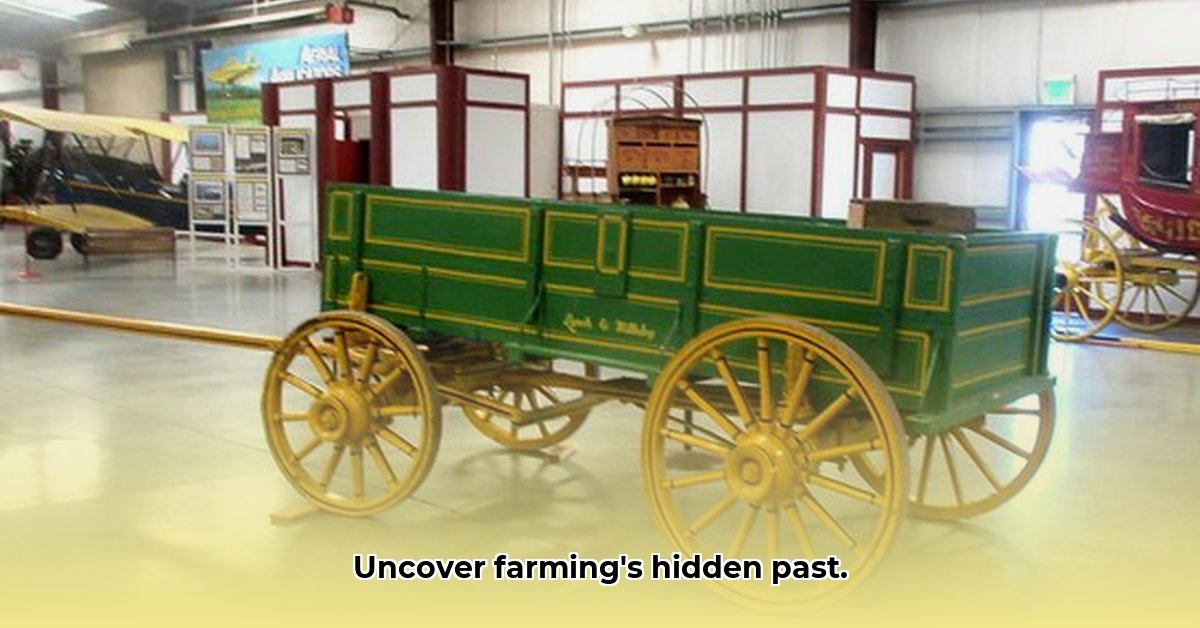
A Journey Through Time and Towards a Sustainable Future
Imagine stepping into a world of rumbling engines and gleaming chrome – the Tractor Museum Woodland. This isn't just a collection of old farm equipment; it's a living testament to agricultural innovation and a crucial link to a sustainable future. Like its counterpart, the California Agriculture Museum, it faces the challenge of staying relevant in a world increasingly focused on eco-friendly practices. But unlike many museums, Tractor Museum Woodland has the potential to be more than just a static display; it can be a dynamic hub, connecting our agricultural past to the urgent needs of today. See more vintage tractor photos here.
This museum holds over 100 tractors and countless other artifacts, each carrying a story of human ingenuity and hard work. These machines didn't just reshape the landscape; they shaped our communities. But how do we ensure these stories continue to resonate with future generations? That's the question at the heart of the Tractor Museum Woodland's journey.
The museum's mission extends beyond mere preservation; it's about fostering a deeper understanding of sustainable farming. This isn't a fleeting trend; it's a necessity. The museum possesses a unique opportunity to bridge the gap between historical farming practices and modern sustainability initiatives. What can we glean from the ingenuity of past designs? How can we inspire visitors to connect historical innovations with the urgent need for sustainable agriculture today? These questions demand careful consideration.
1. Revamping the Digital Landscape: A modern, engaging website is paramount. Think interactive exhibits, virtual tours, and compelling social media campaigns—all designed to reach a broader audience and spark interest in agricultural history.
2. Strategic Partnerships: Collaborations with local schools, universities, and agricultural organizations are key to expanding educational outreach and creating a more dynamic learning environment. These partnerships offer a multitude of opportunities for enriching the museum's impact.
3. Community Engagement Through Interactive Events: Hosting workshops, demonstrations, and family-friendly activities will transform the museum into a vibrant community hub. Interactive displays, hands-on activities, and farmer discussions can ignite a passion for sustainable practices among visitors of all ages.
4. Diversifying Funding Sources: The pursuit of grants and corporate sponsorships is critical to ensuring the museum's long-term financial health and sustainability. This crucial element will support the expansion of programs and exhibits.
Measuring success extends far beyond visitor numbers. It's about assessing the museum's impact on agricultural knowledge and the adoption of sustainable practices. Data analysis must encompass website traffic, visitor surveys, program feedback, and broader community engagement metrics. The ultimate goal is to inspire curiosity, improve understanding of our relationship to the environment and food systems, and build a more sustainable future.
How the California Agriculture Museum Informs Sustainable Practices: Key Learnings
The California Agriculture Museum offers valuable insights into how a historical focus can promote sustainable farming practices. Its collection implicitly highlights the evolution of agricultural techniques, showcasing both advancements and the persistent challenges related to sustainable agriculture. The act of preserving and restoring equipment is itself an act of sustainability, emphasizing resource reuse and waste reduction. While the museum is focused on mechanization, valuable lessons are to be found in the energy efficiency of older methods. This illustrates the necessity of explicitly connecting historical agricultural practices to modern sustainability goals.
Three Pivotal Points from the California Agriculture Museum Case Study:
- The evolving nature of agricultural practices, both historically and in the context of modern sustainability, is central to the collection's narrative.
- Preservation of equipment embodies sustainable practices such as resource reuse and waste reduction.
- Integrating the environmental costs of historical technologies into the narrative would provide a more holistic and valuable learning experience.
The Tractor Museum Woodland stands at a crossroads. It can maintain a traditional approach, or it can evolve into a powerful catalyst for positive change. By focusing on community engagement, promoting sustainable practices, and building strong partnerships, it has the potential to become a leading example for agricultural museums globally. The future is not predetermined; it’s a narrative shaped by community involvement and strategic choices. As Dr. Amelia Hernandez, Agricultural Historian at UC Davis, states, “Museums are not just repositories of the past; they are laboratories for the future. By actively engaging with current issues, they can inspire the next generation of sustainable stewards.” The possibilities are immense. The question remains: are we ready to seize them?